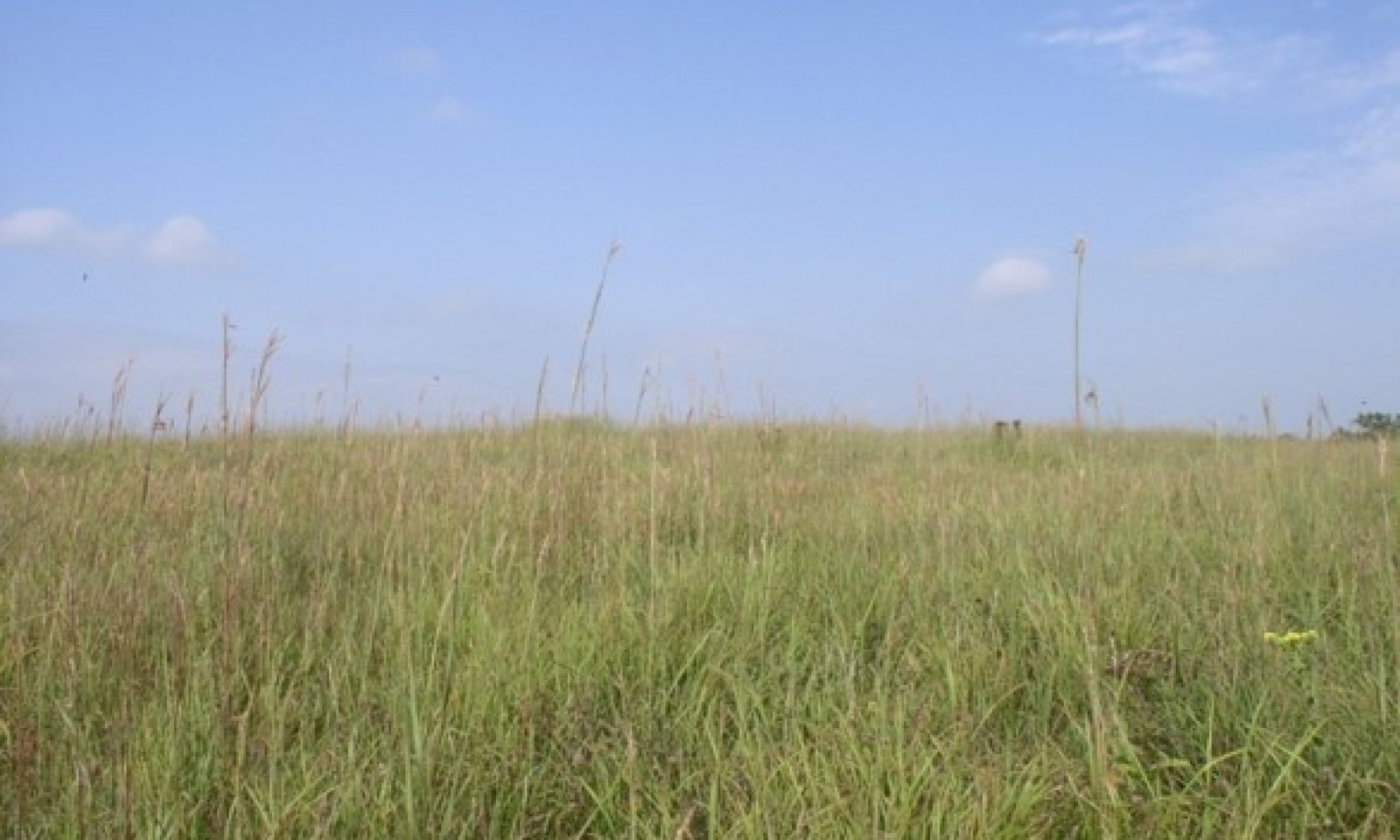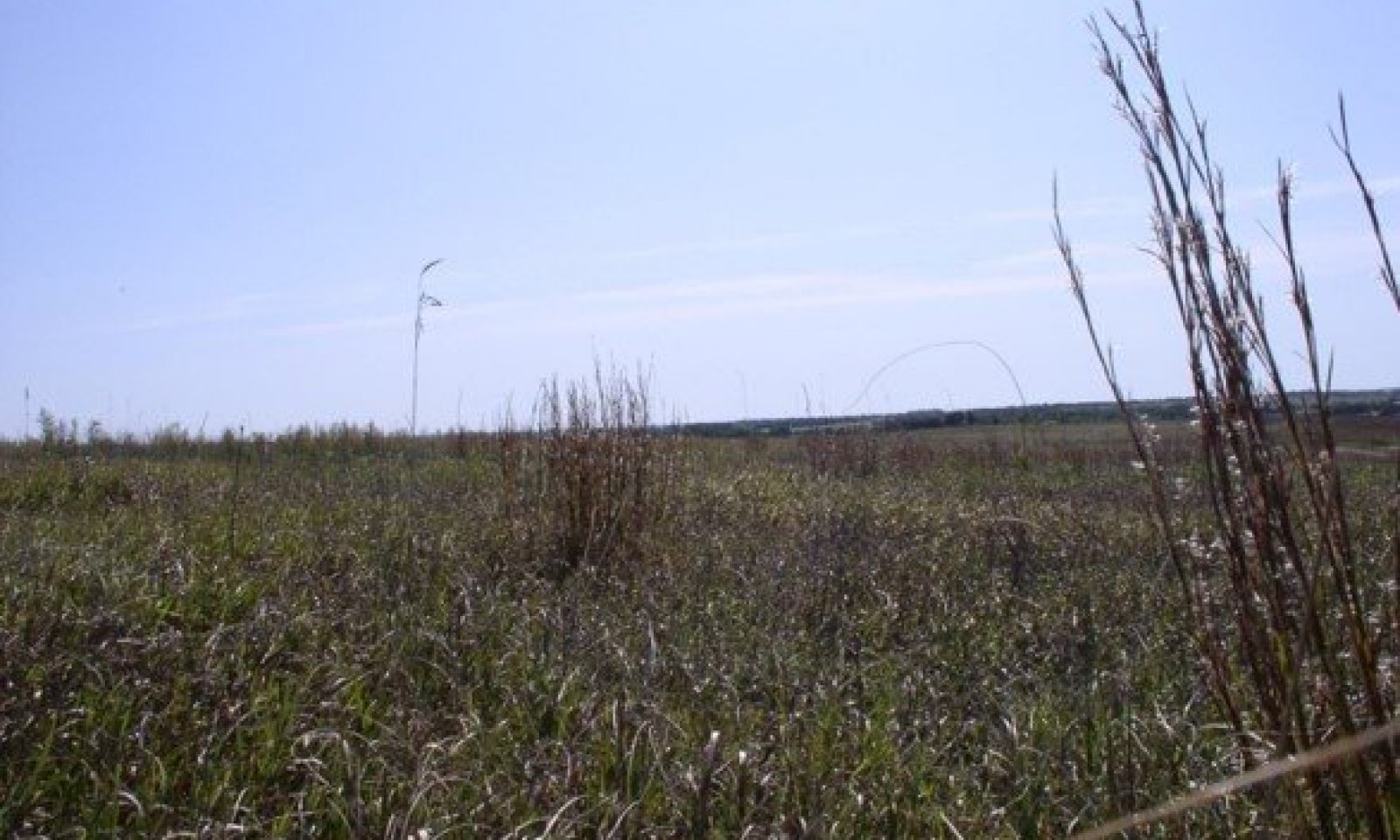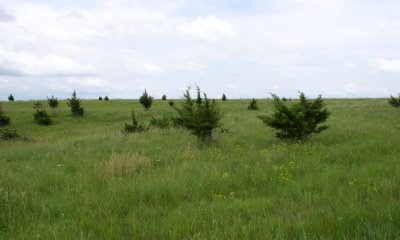
Clayey Upland
Scenario model
Current ecosystem state
Select a state
Management practices/drivers
Select a transition or restoration pathway
- Transition T1-2 More details
- Transition T1-3 More details
- Transition T1-4 More details
- Transition T2-3 More details
- Transition T2-4 More details
- Transition T3-4 More details
- Restoration pathway R4-1,2,3 More details
-
No transition or restoration pathway between the selected states has been described
Target ecosystem state
Select a state
State 1
Reference State




Description
This state comprises the communities within the range of natural variability under historic conditions and disturbance regimes. Patterns created by wildlife use and fire supported a mosaic of communities across the landscape. Warm-season tallgrasses are dominant, with subdominant contributions from mid and cool-season grasses, forbs, and shrubs. Eastern gamagrass is naturally absent in the northern half of the MLRA, but becomes increasingly common southward. Conversely, cool-season grasses, such as porcupine grass and Canada wildrye, are more prominent northward. High perennial grass cover allows for increased soil moisture retention, vegetative production, and overall soil quality.
Fire and bison herbivory were the dominant disturbance regimes that historically maintained the tallgrass dominance with a diverse forb component. Furthermore, bison grazing was closely linked to fire patterns as the animals preferred grazing burned areas offering highly palatable and nutritious regrowth. Thus, historic plant communities were subject to occasional burning and grazing, with substantial rest/recovery periods as the fuel load rebuilt to eventually start this process again. Fires also served to suppress woody species and to maintain an open herbaceous stand. The degree to which current conditions represent this state largely depends upon how closely contemporary management has mimicked these past disturbance effects.
Submodel
States 1, 5 and 2 (additional transitions)
1.1. Tallgrass Prairie
1.5. Ephemeral Forb Community
1.2. Degraded Tallgrass Prairie
State 2
Native/Invaded Grass State




Description
This state exhibits a co-dominance of both native and introduced species. Very few native tall warm-season grasses such as big bluestem and Indiangrass remain. The plant community consists of the more grazing tolerant native species and a significant component of introduced grasses. Forb diversity is limited to less palatable species such as ironweed and western ragweed. Impaired energy capture and altered hydrologic function are reflected in reduced vegetative productivity, shallower rooting depth and degraded soil quality.
Submodel
Description
Extensive areas of this ecological site were plowed and converted to crop production by early European settlers and their subsequent generations. In addition to permanently altering the the existing vegetative community, repeated tillage negatively impacted soil properties. Reductions in organic matter, mineral levels, soil structure, oxygen levels, and water-holding capacity along with increased runoff and erosion as well as shifts in the populations of soil-dwelling organisms were common on these sites. The extent of these changes depended upon the duration of cropping as well as crops grown and other management practices. At this present time there are no restoration arrows from this state to another state.
Submodel
Description
This state is invaded by woody species, primarily eastern redcedar, but also honey locust or other invasive deciduous trees. These woody species are present due to lack of fire and/or brush management measures.
Submodel
Mechanism
Repeated defoliation of preferred native tall and mid-grass warm-season species during periods of active growth reduces individual plant vigor and competitiveness. This facilitates an increase by the more grazing- evasive native warm-season grasses, and cool- season species. As big bluestem, little bluestem, and Indiangrass decrease, cool- season invaders such as smooth brome and/or tall fescue colonize and expand to such a degree that restoration to the reference state through grazing management alone is unlikely.
The native forb and shrub component is also affected by the season and degree of livestock pressure. In response to repeated defoliation, this community will shift to less palatable, more grazing tolerant species that includes non-native invaders.
Repeated growing season haying causes a similar species composition shift in the reference plant community.
Mechanism
This transition occurs when the native grassland is sodbusted and planted to crops or seeded to non-native forage species. Return to the representative plant community is judged to be highly unlikely if not impossible at this stage due to irreversible alterations of the soil properties.
Mechanism
All herbaceous communities are vulnerable to woody dominance in the absence of fire or mechanical brush management. Bur oak, eastern red cedar, coralberry, osage orange, roughleaf dogwood, and honey locust are some of the first species to increase. Although these plants are native to North America, they were not historically a significant part of this reference community. If allowed to continue with little or no disturbance, eastern red cedar, oaks and elm trees will eventually dominate. If ERC is present, the transition is generally thought to occur when its' canopy cover reaches approximately 30 percent. As the overstory closes, various processes serve to increase woody dominance. Woody foliage shades the understory and intercepts rainfall increasing evaporative loss. Litterfall acts similarly and further reduces effective precipitation while also creating a less uniform resource distribution with nutrients concentrated under individual trees. At some critical point, the understory becomes incapable of carrying a fire of the intensity needed to kill the woody species, and the disturbance response is now dictated by the overstory. Mature oak forest is largely invulnerable to stand replacement fire, while established eastern redcedar stands can only burn as crown fires.
Mechanism
This transition occurs when the native grassland is sodbusted and planted to crops or seeded to non-native forage species. Return to the representative plant community is judged to be highly unlikely if not impossible at this stage due to irreversible alterations of the soil properties.
Mechanism
All herbaceous communities are vulnerable to woody dominance in the absence of fire or mechanical brush management. Bur oak, eastern red cedar, coralberry, osage orange, roughleaf dogwood, and honey locust are some of the first species to increase. Although these plants are native to North America, they were not historically a significant part of this reference community. If allowed to continue with little or no disturbance, eastern red cedar, oaks and elm trees will eventually dominate. If ERC is present, the transition is generally thought to occur when its' canopy cover reaches approximately 30 percent. As the overstory closes, various processes serve to increase woody dominance. Woody foliage shades the understory and intercepts rainfall increasing evaporative loss. Litterfall acts similarly and further reduces effective precipitation while also creating a less uniform resource distribution with nutrients concentrated under individual trees. At some critical point, the understory becomes incapable of carrying a fire of the intensity needed to kill the woody species, and the disturbance response is now dictated by the overstory. Mature oak forest is largely invulnerable to stand replacement fire, while established ERC stands can only burn as crown fires.
Mechanism
All herbaceous communities are vulnerable to woody dominance in the absence of fire or mechanical brush management. Bur oak, eastern red cedar, coralberry, osage orange, roughleaf dogwood, and honey locust are some of the first species to increase. Although these plants are native to North America, they were not historically a significant part of this reference community. If allowed to continue with little or no disturbance, eastern red cedar, oaks and elm trees will eventually dominate. If ERC is present, the transition is generally thought to occur when its' canopy cover reaches approximately 30 percent. As the overstory closes, various processes serve to increase woody dominance. Woody foliage shades the understory and intercepts rainfall increasing evaporative loss. Litterfall acts similarly and further reduces effective precipitation while also creating a less uniform resource distribution with nutrients concentrated under individual trees. At some critical point, the understory becomes incapable of carrying a fire of the intensity needed to kill the woody species, and the disturbance response is now dictated by the overstory. Mature oak forest is largely invulnerable to stand replacement fire, while established ERC stands can only burn as crown fires.
Mechanism
Restoration to an herbaceous condition can be achieved with brush management for woody plant removal, but whether the outcome includes native and/or introduced herbs will depend heavily on understory composition and seedbank. Stands of mature deciduous trees generally are invulnerable to fire, and grassland restoration will require mechanical means. Mature redcedar may be removed either mechanically or with fire; however, prescribed burns should consider site stability as well as logistical, legal, and safety constraints. Furthermore, sprouting brush such as honey locust or elm must be chemically treated after mechanical removal. If the site is stable and has a robust seedbank, this community could quickly return to a grassland state with proper follow-up management. Ongoing brush management such as hand cutting, chemical spot treatments, or periodic prescribed burning is required.
Relevant conservation practices
| Practice | External resources |
|---|---|
|
Brush Management |
|
|
Prescribed Burning |
Model keys
Briefcase
Add ecological sites and Major Land Resource Areas to your briefcase by clicking on the briefcase (![]() ) icon wherever it occurs. Drag and drop items to reorder. Cookies are used to store briefcase items between browsing sessions. Because of this, the number of items that can be added to your briefcase is limited, and briefcase items added on one device and browser cannot be accessed from another device or browser. Users who do not wish to place cookies on their devices should not use the briefcase tool. Briefcase cookies serve no other purpose than described here and are deleted whenever browsing history is cleared.
) icon wherever it occurs. Drag and drop items to reorder. Cookies are used to store briefcase items between browsing sessions. Because of this, the number of items that can be added to your briefcase is limited, and briefcase items added on one device and browser cannot be accessed from another device or browser. Users who do not wish to place cookies on their devices should not use the briefcase tool. Briefcase cookies serve no other purpose than described here and are deleted whenever browsing history is cleared.
Ecological sites
Major Land Resource Areas
The Ecosystem Dynamics Interpretive Tool is an information system framework developed by the USDA-ARS Jornada Experimental Range, USDA Natural Resources Conservation Service, and New Mexico State University.



